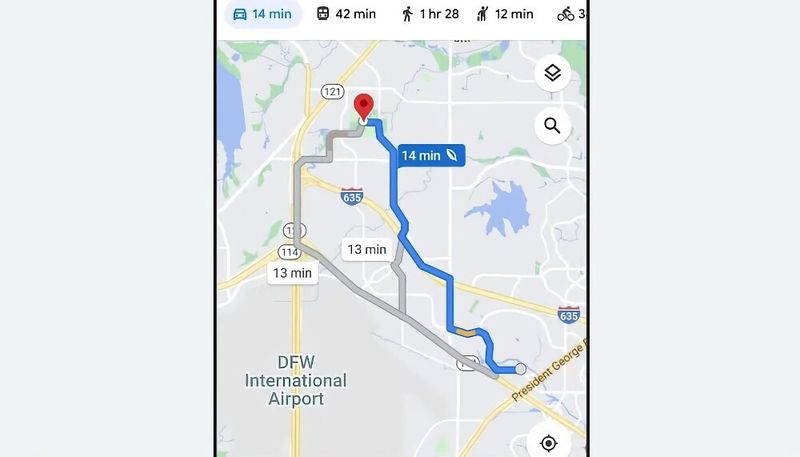The new feature announced today by Google Maps may change the way millions of people move around. The company explains that it will stop showing the fastest route by default and instead Google Maps will recommend the ecological route or less polluting route. A new type of route presented in March is calculated based on factors such as fuel consumption, traffic congestion, or the inclination of the road.
With this change, Google hopes to help reduce the consumption of drivers. New ecological routes are already available in the United States and will be implemented in Europe from 2022, without specifying whether it will be during the first half of the year or later.
Users will still be able to choose the fastest route in Google Maps
The arrival of these eco-friendly routes represents a change in the priorities of the Google Maps algorithm. To date, the recommended route (usually shown in blue) was the fastest available route and from the settings, we could choose alternative routes based on various parameters.
From now on in the US and next year in Europe, Google Maps will be updated and will give priority to these eco-friendly routes ahead of the fastest route, unless the time difference is very high.

The calculation of these less polluting routes will be done by Google’s own algorithms and in synchronization with the NREL (National Renewable Energy Laboratory of the USA). The company has not yet specified with whom it will collaborate for its implementation in Europe.
The shortest time will continue to be a consideration, not because of the concept that you’ll arrive sooner, but because it is most likely to result in the least consumption. Google will use these ecological paths to calculate the least amount of resources, and because they frequently follow the quickest path, many times they’ll stay in sync.
In addition to this ecological route, Google Maps will also continue to show the fastest route with their respective times. With this measure, Google explains that it will be possible to avoid each year more than one million tons of carbon emissions, equivalent to removing more than 200,000 cars from the road.





